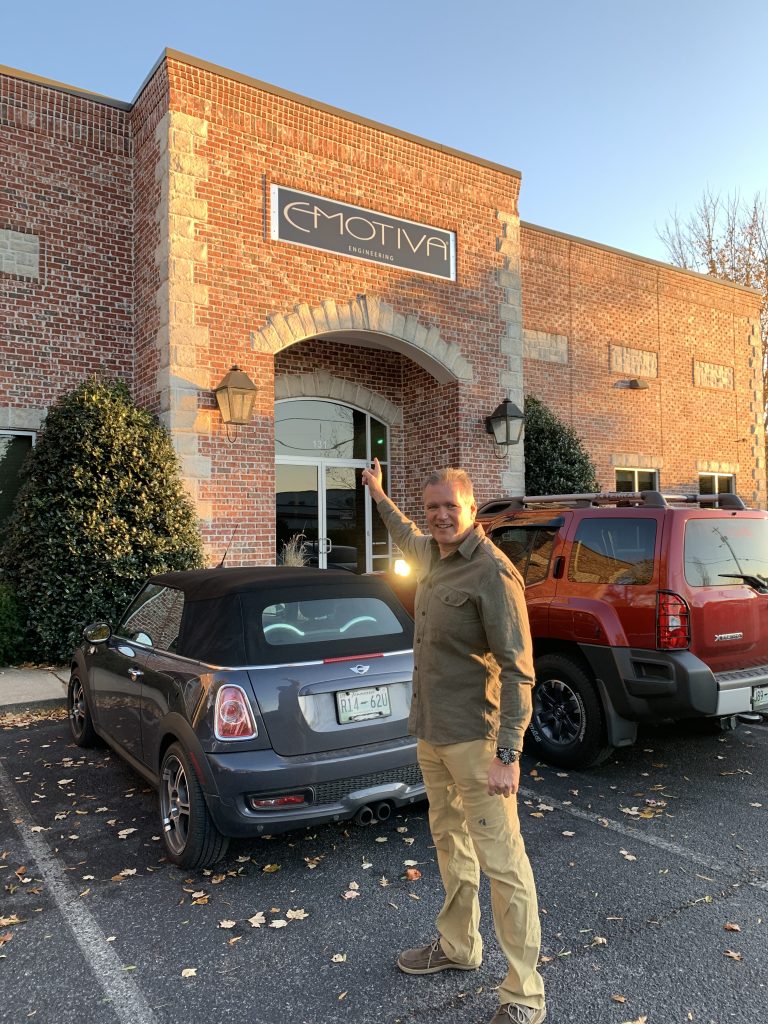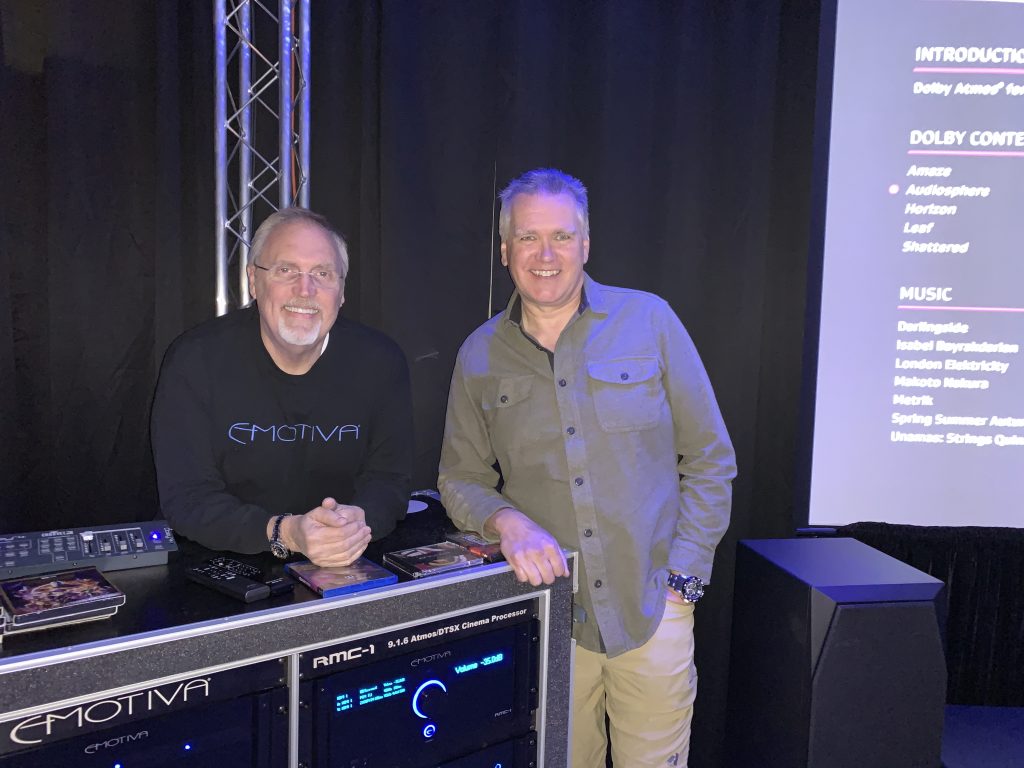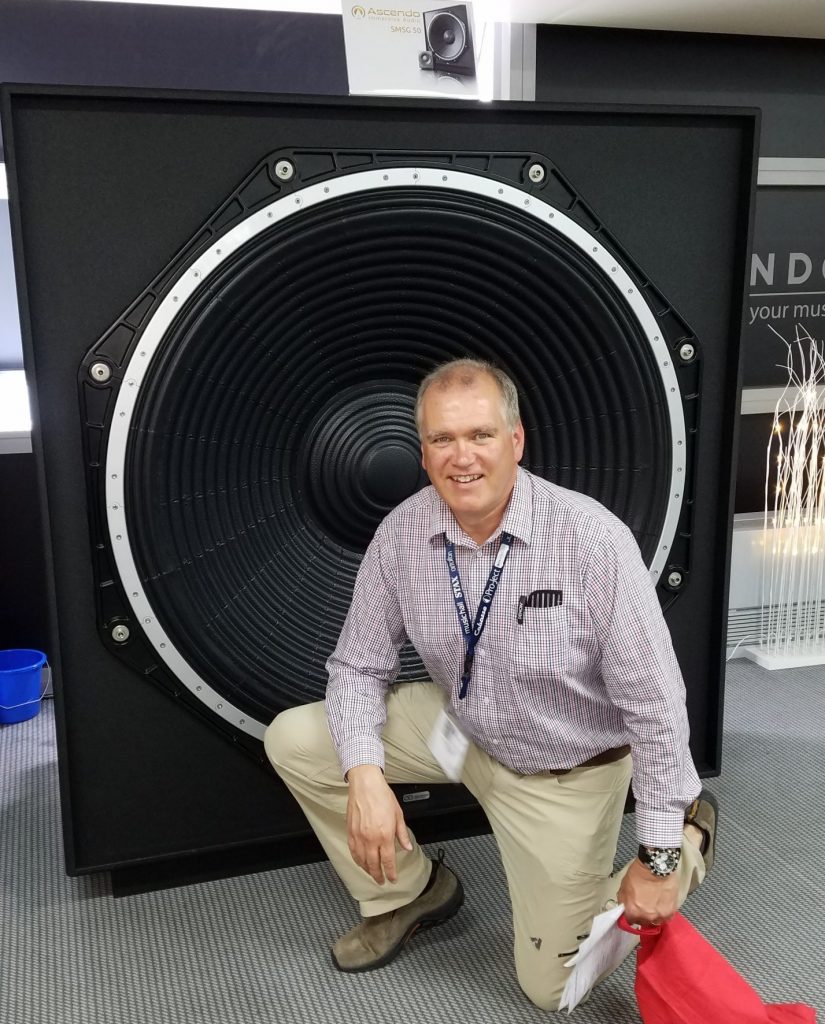This post explains the more technical language often used by audiophiles to describe the sonic characteristics of a system.
Absolute Phase / Absolute Polarity
Refers to the preservation of the initial acoustic waveform all the way through the recording and reproducing system so that a compression that reaches the original microphone will be reproduced in the listener’s system as a compression reaching his or her ears. Some listeners appear to be more sensitive to this being correct than others, often referring to the inverted state as “muffled.”
Airy
Pertaining to treble which sounds light, delicate, open, and seemingly unrestricted in upper extension. A quality of reproducing systems having very smooth and very extended HF response.
Articulation
- Clarity and intelligibility, usually of voice reproduction.
- The reproduction of inner detail in complex sounds, which makes it easy to follow an individual musical voice among many.
Balance
- The subjective relationship between the relative loudness of the upper and lower halves of the audio spectrum; “tonal balance.”
- The relative loudness of the instruments in a performing group.
- Equality of signal level between the left and right stereo channels, which centers the soundstage and allows mono program material to image at the center; Also called channel balance.
Balanced (Differential) vs. Unbalanced Signals
When using an unbalanced interconnect, the audio signal runs through both the center wire and the shield/ground wire. Any noise picked up by this interconnect (i.e., nearby magnetic fields such as an AC power cord) will be reproduced by the amplifier and heard through the loudspeakers. Conversely, a balanced interconnect has three separate conductors; one for the ground and two for the actual signal. These two signals are identical except that one is 180 degrees out of phase with the other. For example, when one conductor is carrying a signal of +5 Volts, the other will be carrying a signal of -5 Volts. When these two inverted signals on a balanced line are input into a differential power amplifier, any noise picked up by the interconnect will be eliminated since a differential circuit amplifies only the difference between these two signals: Noise on a balanced interconnect will be equal on both conductors and therefore not be processed.
Beyond-the-speakers imaging
The placement of phantom images or spatial (stage boundary) information beyond the positional limits of the loudspeakers.
Bi-Wired Lodspeakers
This is the result of running 2 equal lengths of cable from your power amplifier to your loudspeaker, which must have 2 pairs of binding posts – 1 each for the woofer and the tweeter. Improved sonic performance is achieved from what is referred to as frequency splitting, which significantly reduces the magnetic interaction inside the cables. Many speaker cables are configured for bi-wiring whereby a single cable run has 2 terminations for the amplifier connection (+ and -) and 4 terminations for the speaker connection (+ and – for the woofer / + and – the tweeter).
Boomy / Boominess
Characterized by pronounced exaggeration of the mid-bass and, often, dominance of a narrow range of bass frequencies.
Bright / Brilliant
The degree to which reproduced sound has a hard, crisp edge to it. Brightness relates to the energy content in the 4kHz-8kHz band. It is not related to output in the extreme high-frequency range. All live sound has brightness; it is a problem only when it is excessive.
Center Fill
Correct image placement between the loudspeakers of sound sources which were originally located at or near center-stage.
Center image
The phantom third channel. Many people think of a two-channel system as having three distinct channels or places where sound originates. This phantom center channel is the product of an equal and identical sound source coming from both the left and the right loudspeakers. When properly setup, a well balanced two-channel stereo system should produce a virtually seamless presentation that extends from one side of the room to the other side of the room.
Class-A/B Amplification
This is the most common form of amplification; Output transistors are arranged in complimentary pairs where one transistor handles the positive (+) phase and the other handles the negative (-) phase of the signal – when one is working, the other is resting. Also commonly referred to as push-pull output, this involves a significant amount of switching.
Class-A Amplification
Instead of splitting the signal into + and – phases, each requiring a separate transistor like in Class-A/B, Class-A requires that each output transistor handle both phases of the signal. As a result, each transistor conducts current all the time – they are always turned on, resulting in significant heat dissapation and less output power. They also draw the same electrical AC current at idle as at fuill power output. However, Class-A amplifiers have many advantages: Since the transistors are always conducting, they are more linear so that the output signal more closely resembles the input signal; As well, since the transistors never switch on and off when amplifying a signal, crossover distortion is virtually eliminated. Finally, the output transistors have better thermal stability, which yields more uniform operating characteristics.
Many of todays Class-A/B amplifiers operate in Class-A at very low power output levels, usually to 5 watts, to maintain efficiency. This is dependant on the amount of bias – a small DC current that makes transistors conduct a larger current – that is applied to the output transistors. A higher bias results in increased current and more Class-A power output.
Coherent
- Pertaining to a multi-way loudspeaker’s sound: seamless from top to bottom; showing no audible evidence of a crossover or of different driver colorations in different frequency ranges.
- Pertaining to the soundstage: phantom imaging that reproduces within the stereo stage the original lateral positions of the performers.
Coloration
An audible “signature” with which a reproducing system imbues all signals passing through it.
Continuity
- Of the soundstage: the reproduction of the original lateral positions of the stereo images.
- Of a multi-way loudspeaker: uniformity of coloration from the operating range of one driver to that of the other(s).
Control
The extent to which a loudspeaker sounds as if it is “tracking” the signal being fed to it. The sound is tight, detailed, and focused. Also refer to “damping”.
Damping
The amount of control an amplifier seems to impose on a woofer. Underdamping causes loose, heavy bass; overdamping yields very tight but lean bass.
Dark
A warm, mellow, excessively rich quality in reproduced sound. The audible effect of a frequency response that is clockwise-tilted across the entire range, so that output diminishes with increasing frequency. The opposite of “light.”
Decay
The way a musical note stops.
Definition
Also commonly referred to as resolution is the quality of sound reproduction which enables the listener to distinguish between, and follow the melodic lines of, the individual voices or instruments comprising a large performing group. Also refer to “Focus.”
Depth
The illusion of acoustical distance receding behind the loudspeaker plane, giving the impression of listening through the loudspeakers into the original performing space, rather than to them. Also refer to “Layering,” “Transparency.” The opposite of “Flat.”
Detail
The subtlest, most delicate parts of the original sound, which are usually the first things lost by imperfect components. Also refer to “Low-Level Detail .” The opposite of “Smearing” and “Veiling.”
Direct Sound
A sound reaching the ears in a straight line from its source. The direct sounds are always the first sounds heard. The “critical distance” from a sound source is when the spl of the direct sound is equal to that of the reverberant field. Please refer to “Far Field” & “Near Field”. The opposite of “Reflected Sound.”
Dry
- When describing the texture of reproduced sound: very fine-grained, chalky.
- When describing an acoustical space: deficient in reverberation or having a very short reverberation time.
- When describing bass quality: lean, overdamped.
Dull
Lifeless, muffled, veiled. Same as “soft,” only more so. The audible effect of HF rolloff setting in at around 5kHz.
Dynamic
Giving an impression of wide dynamic range; punchy. This is related to system speed as well as to volume contrast.
Dynamic Range
- Pertaining to a signal: the ratio between the loudest and the quietest passages.
- Pertaining to a component: the ratio between its no-signal noise and the loudest peak it will pass without distortion.
Effortless
Unstrained; showing no signs of audible stress during loud passages. The opposite of “Strained.”
Etched
Very crisp and sharply outlined, focused to an almost excessive degree.
Euphonic
Pleasing to the ear. In audio, “euphonic” has a connotation of exaggerated richness rather than literal accuracy.
Extension
The usable limits of a component’s frequency range
Fast
Giving an impression of extremely rapid reaction time, which allows a reproducing system to “keep up with” the signal fed to it.
Far Field
Pertains to that range of listening distances in which the predominant sounds reaching the ears are reflections from room boundaries. The opposite of “Near Field”.
Flat
- Having a subjectively uniform frequency response, free from humps and dips.
- Deficient in or lacking in soundstage depth, resulting in the impression that all reproduced sound sources are the same distance from the listener.
Floating
A positive attribute that pertains to soundstaging in which the phantom images seem to exist independently of the loudspeaker positions, giving the impression that the speakers are absent. Refer to “Beyond-the-Speakers Imaging,” “Depth,” & “Layering.” The opposite of “Flat” & “Wander.”
Focus
The quality of being clearly defined, with sharply outlined phantom images. Focus has also been described as the enhanced ability to hear the brief moments of silence between the musical impulses in reproduced sound.
Forward / Forwardness
A quality of reproduction which seems to place sound sources closer than they were recorded. Usually the result of a humped midrange, plus a narrow horizontal dispersion pattern from the loudspeaker. The opposite of “Laid-Back.”
Frequency Range
This is a breakdown within the limits of what is considered a component’s acceptible range:
- Extreme Bottom: below 32Hz
- Bottom Octave: 20 – 40Hz
- Low Bass: 41 – 80Hz
- Mid-Bass: 81 – 160Hz
- Lower Midrange: 161 – 320Hz
- Midrange: 321Hz – 2.5kHz
- Upper Midrange: 2.51 – 5.12kHz
- Highs & Lower Highs: 5.13 – 10.24Hz
- Extreme Highs: 10.25 – 20kHz
Frequency / Amplitude Response
- A range of frequencies stated with level limits: For example “The amplifier’s frequency response is 10Hz-80kHz ±3dB.”
- The uniformity with which a either system or individual component sounds as if it reproduces the range of audible frequencies. Equal input levels at all frequencies should be reproduced by a system with subjectively equal output.
Grainy
The moderate texturing of reproduced sound. The sonic equivalent of noticeable grain appearing in a photograph.
Hard
Tending toward steeliness, but not quite shrill. Often the result of a moderate frequency response hump centered around 6kHz, sometimes also caused by small amounts of distortion.
Hash
A very coarse texturing of the sound, characterized by a sharp-edged, spiky roughness. Caused by severe distortion with strong transient content, as from a grossly mistracking phono cartridge.
High-end Audio
The pursuit of realistic sound reproduction.
High Fidelity
- A kind of sound-reproducing system whose realism of reproduction is judged to be better than average. Stereo reproduction can be high fidelity or otherwise.
- The pursuit of perfection in sound reproduction, as a hobby or a religion.
Imagery
Usually describes qualities in reproduced sound in terms of more familiar sensory responses like vision, taste, and touch.
Imaging
The measure of a system’s ability to float stable and specific phantom images, reproducing the original sizes and locations of the instruments across the soundstage. Refer to “Stereo Imaging.”
Impact
A quality of concussive force, as from a deep, strong bass attack, which produces a brief sensation of visceral pressure.
Impulse
An abrupt, extremely brief burst of signal energy; a transient.
Inaudible
A sonic imperfection which is either too subtle to be consciously perceived or is actually nonexistent.
Inner Detail
The sonic subtleties within a complex program signal, reproducible only by a system having high resolution. Refer to “Focus.
Laid-back
Recessed, distant-sounding, having exaggerated depth, usually because of a dished midrange. The opposite of “Forward.”
Layering
The reproduction of depth and receding distance, which audibly places the rows of performers one behind the other.
Lean
Very slightly bass-shy. The effect of a very slight bass rolloff below around 500Hz.
Light
Lean and tipped-up. The audible effect of a frequency response which is tilted counterclockwise. The opposite of “Dark.”
Listening Fatigue
A psychoacoustic phenomenon from prolonged listening to sound whose distortion content is too low to be audible as such but is high enough to be perceived subliminally. The physical and psychological discomfort can induce headaches and nervous tension. First generation CD players from the 1980’s were often a cause of this scenario.
Low-Level Detail
The subtlest elements of musical sound, which include the delicate details of instrumental sounds and the final tail of reverberation decay.
Modulation Noise
A hiss or other extraneous noise that “rides on” the main signal, varying in loudness according to the strength of that signal.
Muffled
Very dull-sounding; having no apparent high frequencies at all. The result of HF rolloff beginning around 2kHz.
Musical / Musicality
A personal judgment as to the degree to which reproduced sound resembles live music. Real musical sound is both accurate and euphonic, consonant and dissonant.
Near Field
Pertains to that range of listening distances in which the sounds reaching the ears are predominantly direct. The opposite of “Far Field”.
Opaque
Lacking detail and transparency.
Open
Exhibiting qualities of delicacy, air, and fine detail. Giving an impression of having no upper-frequency limit.
Out-Of-Phase
In a two-channel system, one channel being in opposite polarity to the second, most commonly due to having one speaker hooked up with the red (positive) lead to the red (positive) terminal, the other with the red lead to the black (negative terminal). The result will be a reduction in low frequencies.
Loudspeakers generate sound that we hear because of the back and forth movement of the speaker drivers. This back and forth movement pressurizes the air and moves our personal hearing mechanism. We hear this pressurization of the air. If the same signal comes to both loudspeakers at exactly the same time, and the two loudspeaker drivers are moving at exactly the same rate and time, then the air will move in concert with the drivers. However, if the two drivers are out of phase, then each moves in an opposite direction from the other. This causes the sound to de-pressurize or cancel and you lose sound pressure or volume. Please refer to “Phasey.” Not to be confused with an inversion of Absolute Phase / Absolute Polarity.
Pace
The apparent tempo of a musical performance, which can be different from its actual beats-per-minute Tempo. Pace is affected by phrasing in performance and speed in reproduction.
Palpable
Describes reproduction that is so realistic you feel you could reach out and touch the instruments or singers.
Perspective
The soundstage depth information that is conveyed by layering.
Phantom Image
The re-creation by a stereo system of an apparent sound source at a location other than that of either loudspeaker.
Phasey
A quality of reproduced sound which creates a sensation of pressure in the ears, unrelated to the intensity of the sound. Phasiness is experienced by many people when listening to two loudspeakers which are connected “Out-Of-Phase” with each other.
Pinpoint Imaging
Stereo imaging that is precise, stable, and focused.
Point Of First Reflection
The point at which the sound from your loudspeaker first hits a wall or room boundary.
Presence
A quality of realism and aliveness.
Realism
A subjective assessment of the degree to which the sound from an audio system approaches that of live music. This has meaning only when the recording purports to reproduce an acoustical event taking place in a real acoustical space.
Recessed
Very laid-back.
Reflected Sound
A sound that reaches the ears after being reflected from at least one boundary surface. Also refer to “Far Field” & “Near Field”. The opposite of “Direct Sound.”
Reticent
Moderately laid-back. Describes the sound of a system whose frequency response is dished-down through the midrange. The opposite of “Forward.”
Revealing
Pertaining to a loudspeaker or a system as a whole: Outstandingly detailed and focused; analytical.
Reverberation
A diminishing series of echoes spaced sufficiently closely in time that they merge into a smooth decay.
Ringing
The audible effect of a resonance: coloration, smear, shrillness, or boominess.
Rolloff
A frequency response that falls gradually above or below a certain frequency limit. By comparison, the term cutoff (often abbreviated to “cut,” as in “bass cut”) implies an abrupt loss of level above or below the frequency limit.
Rumble
An extraneous low-frequency noise, often of indeterminate pitch, caused by physical vibration of a turntable or of the room in which a recording was made.
Seamless
Having no perceptible discontinuities throughout the audio range.
Sibilance
A coloration that resembles or exaggerates the vocal s-sound.
Slow
Sound reproduction which gives the impression that the system is lagging behind the electrical signals being fed to it. Also Refer to “Fast,” “Speed,” & “Tracking.”
Smearing
Severe lack of detail and focus.
Smooth
Sound reproduction having no irritating qualities; free from HF peaks, easy and relaxing to listen to. Effortless. Not necessarily a positive system attribute if accompanied by a slow, uninvolving character.
Solid-State Sound
That combination of sonic attributes common to most solid-state amplifying devices: deep, tight bass, a slightly withdrawn brightness range, and crisply detailed highs.
Soundstaging / Soundstage Presentation
The accuracy with which a reproducing system conveys audible information about the size, shape, and acoustical characteristics of the original recording space and the placement of the performers within it.
The ideal stereo soundstage for a large performing group will center the performers across an area of about 2/3 to 3/4 of the distance between the loudspeakers, and will audibly separate the front rows from the receding rows (layering). There will be an awareness of the reflective boundary walls of the acoustic space behind and to the sides of the performers, and the spatiality of the hall itself will extend a considerable distance beyond the distance between the loudspeakers. The ideal is achieved only from suitably miked recordings.
Soundstage Shift
Apparent lateral movement of the soundstage when listening from either side of the sweet spot.
Spacious
Presenting a broad panorama of ambience, which may be wider than the distance between the loudspeakers.
Speed
The apparent rapidity with which a reproducing system responds to steep wavefronts and overall musical pace. Refer to “Fast” & “Slow.”
Standing Waves
Groups of high and low pressure waves that build up in a room. There are no standing waves without a room. A graphical view of a standing wave is easy to produce. Take a glass of water and set the glass atop your loudspeaker. Put on some music with lots of heavy bass and crank up the music. While it is playing, look at the water inside the glass. Note that there are ripples in the water caused by the speaker’s vibration. The ripples will appear to stand still and in many cases not be obviously associated with the sound.
The air in your room can act the same as the water in the glass. As your speakers pressurize the air in the room, standing waves bunch together in much the same way as the water in the glass did. Typically these standing waves gather at the boundaries of the room and the corners.
The problem with standing waves is that they create tonal imbalances, especially in the bass. Standing waves create interference patterns that will either boost some frequencies while attenuating others. This has a lot to do with why one room sounds better than another.
State-of-the-Art
Pertains to equipment whose performance is as good as the technology allows. The best sound equipment money can buy.
Stereo Imaging
The production of stable, specific phantom images of correct localization and width. Refer to “Soundstaging” & “Wander.
Stereo Spread
The apparent width of the soundstage and the placement of phantom images within it. Generally, a group of instruments or voices should uniformly occupy the space between the loudspeakers. The opposite of “Beyond-the-Speakers Imaging”.
Sterile
Pristinely clean but uninvolving sound.
Strained
Showing signs of audible distress during loud passages, as though the system is verging on overload. The opposite “Effortless.”
Suckout
A deep and narrow frequency-response dip.
Sweet Spot
That listening seat from which the best soundstage presentation is heard. Usually a center seat equidistant from the loudspeakers.
Tempo
The actual number of beats per minute in a musical performance. The opposite of “Pace.”
Texture / Texturing
A perceptible pattern or structure in reproduced sound, even if random in nature. Texturing gives the impression that the energy continuum of the sound is composed of discrete particles, like the grain of a photograph.
Thick
Describes sodden or heavy bass.
Thin
Very deficient in bass. The result of severe attenuation of the range below 500Hz.
Tight
- Bass reproduction that is well controlled, free from hangover, not slow.
- Stereo imaging that is specific, stable, and of the correct width.
- Describes a closely bunched image in A+B double-mono mode that occupies a very narrow space between the loudspeakers.
Timbre
The recognizable characteristic sound “signature” of a musical instrument, by which it is possible to differentiate an oboe from a flute when both are sounding the same note.
Tonal Balance
Tonal balance is the art of achieving a balance or neutrality of volume between tones. If one tone or frequency is louder, softer, more apparent than another tone, then you do not have accurate tonal balance.
Tonality
In music, the quality of an instrument’s tone, often related to the key in which the music is written. In audio, mistakenly used in place of “Tonal Quality.”
Tonal Quality
The accuracy (correctness) with which reproduced sound replicates the timbres of the original instruments.
Tracking
The degree to which a component responds to the dictates of the audio signal, without lag or overshoot.
Transparency / Transparent
- A quality of sound reproduction that gives the impression of listening through the system to the original sounds, rather than to a pair of loudspeakers.
- Freedom from veiling, texturing, or any other quality which tends to obscure the signal. A quality of crystalline clarity.
Tube sound / Tubey
That combination of audible qualities which typifies components that use tubes for amplification: Richness and warmth, an excess of mid-bass, a deficiency of deep bass, outstanding rendition of depth, forward and bright, with a softly sweet high end.
Tweak
- To fine-tune a system or component to the nth degree in pursuit of perfection.
- A person who constantly does this in an ultimately vain effort to achieve absolute perfection.
Uncolored
Free from audible colorations.
Uninvolving
Ho-hum sound. Reproduction that evokes boredom and indifference.
Veiled / Veiling
Pertaining to a deficiency of detail and focus, due to moderate amounts of distortion, treble-range restriction, or attack rounding.
Wander
Side-to-side vacillation of the apparent position of a stereo image as the instrument plays different notes. Poor imaging stability.
Warm
The same as Dark, but less tilted. A certain amount of warmth is a normal part of musical sound.
Weight
- The feeling of solidity and foundation contributed to music by extended, natural bass reproduction.
- The emphasis assigned to a subjective term by a qualifier.
Width
The apparent lateral spread of a stereo image. If appropriately miked when recorded, a reproduced instrument should sound no wider or narrower than it would have sounded originally. See “Stereo Spread.”













